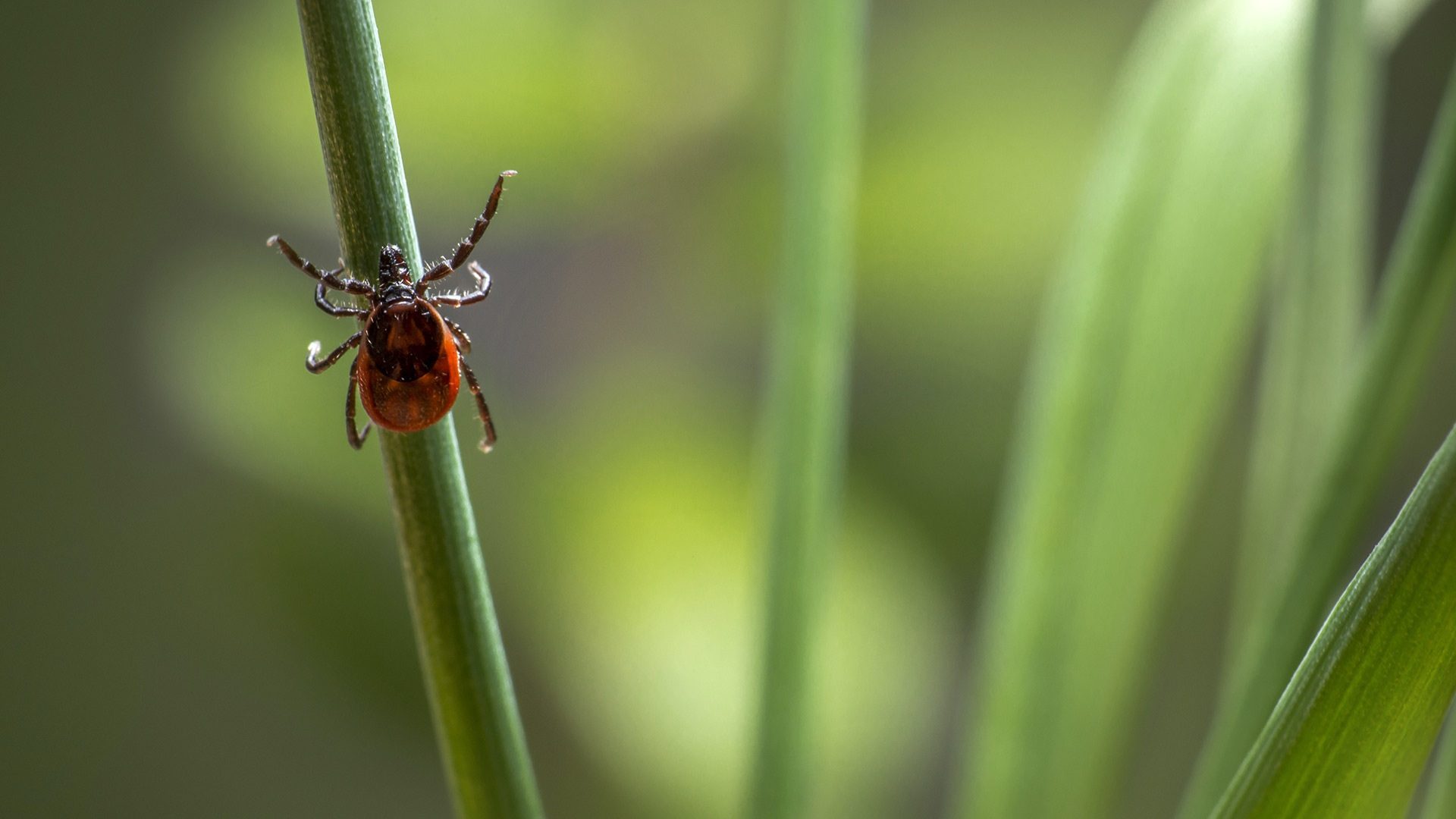- May 02, 2023
- By Karen Shih ’09
Looking forward to roasting marshmallows by a campfire or planting a bountiful veggie garden? Look out for a little something ready to crash your fun: ticks, tiny, bloodsucking creatures are out in full force this time of year.
Assistant Professor Jennifer Mullinax, a wildlife ecologist in the Department of Environmental Science and Technology, is leading studies in Maryland to reduce tick-borne illnesses. She breaks down what ticks are, where they live, the risks they pose and how we can best protect ourselves.
What is a tick?
It is an arachnid, not a true insect, essentially a parasite that has to feed on a host to transition from one life cycle (larva, nymph, adult) to the next.
Where do they live?
They love brushy, scrubby stuff. Think of an overgrown edge of a trail, a power line right-of-way or a yard that backs up against natural areas—all of those are often full of ticks. The heaviest hotspot for ticks that spread Lyme disease is in the Northeast, but different types of ticks live across the United States, and their range is expanding.
How do ticks infect humans?
They don’t jump, they don’t fly, they don’t drop off of things. They climb up a bush or tall grass, wave their little arms and wait for something to brush by, then they latch onto you.
Typically, they’re not born with diseases. It’s when they feed on an animal like a deer or mouse that they pick it up. Then, when humans get bitten, we become infected.
What diseases do they carry?
Blacklegged ticks spread Lyme disease, which is a huge issue. If it’s caught early, you can take antibiotics, but if not, it can become a chronic disease, with severe joint pain, inflammation, headaches and more. They can also spread anaplasmosis, which causes fever, chills and muscle aches. Lone star ticks, which have a white spot on their backs, can carry the Alpha-gal molecule, which sets off a red meat allergy.
We expect to see more tick-borne diseases with climate change, as more places become hot and humid. We’re not having the freezes we used to that would knock back tick populations.
What can people do to avoid getting these diseases?
It’s shocking, but you have no idea they’re on you—they’re so light. So the first thing I would say is you need real bug spray: permethrin. Not citronella, none of those herb-y things. Spray it on your clothing and shoes outside, let it dry, then wear it.
Choose long pants and close-toed shoes. My students tuck their pants into their socks, and some even use duct tape around their ankles, to make sure there are no gaps for the ticks to crawl into.
Do diligent tick checks. My kids play in the woods every day, and during tick season, from May to October, we do a full body check every night. That means naked, in the mirror, looking at every crevice: between your legs, under your arms, behind your ears, etc. The tick needs about 24 hours to do a full blood exchange, so if you get them off quickly—I aim for less than 12 hours—you can feel confident it hasn’t had time to give you anything.
How can people protect their yards?
You can create a three- to four-foot mulch barrier between your property and any woods or brush, to limit the green surface area ticks can crawl across and brushy vegetation. You can also fence your property to keep deer out.
If you’re in a really tick-y area, get tick tubes. You can buy them premade from any home improvement store, or you can make them with cotton balls soaked in permethrin placed inside toilet paper rolls. Spread them around your property, so the mice take them back to their nests and repel ticks. They both have short lifespans, so if you do this for a couple of years, you can really reduce the prevalence of these diseases.
